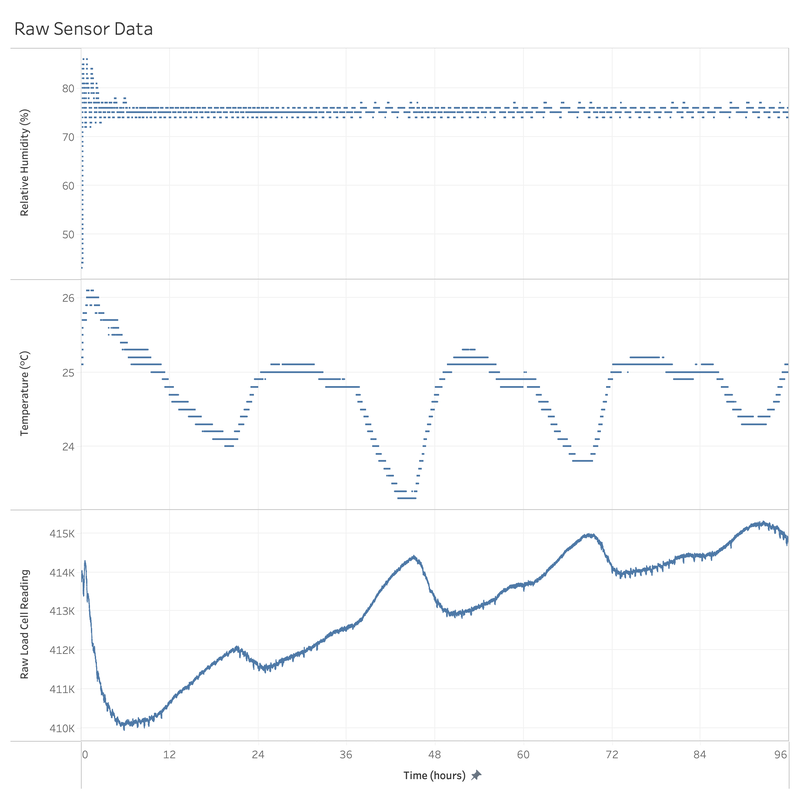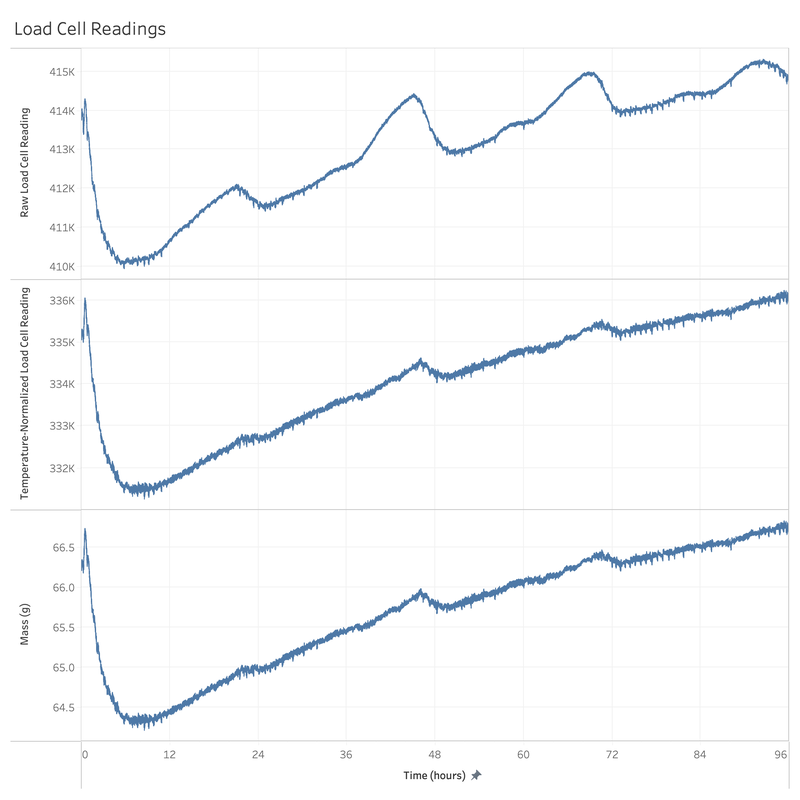Results
Only one complete test has been conducted as of the time of this writing, so there is insufficient data to either prove or disprove the initial hypothesis. However, this test does demonstrate the viability of the overall method. During this test, an unfinished sample block was placed in the test enclosure for 96 consecutive hours to collect baseline data.
When normalized, the load cell data reveals that the mass of the sample block increased by approximately 2.5 grams (3.9%) between the 8-hour mark and the end of the test period.
Two aspects of this data are troubling, however. The marked decrease in load cell readings during the first few hours of the test is unexplained and may indicate a need for more extensive preconditioning. Also, the readings weren't completely smoothed by the temperature normalization process. The local maxima at the 46- and 70-hour marks likely indicate that the normalization coefficients are not completely accurate, but could also point to changes in rate at which moisture is absorbed by the test block due to variations in temperature.
Presentations
Proposal |
Background |
Construction |
Methodology |
Results |

